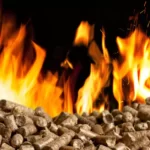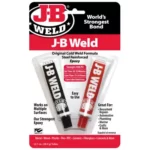Wood chips are an integral part of many industries and households, often used in gardening, landscaping, and even as a fuel source in certain heating systems. Their versatility and convenience make them a popular choice for diverse applications. Nonetheless, storing them properly is crucial to maintaining their quality and effectiveness.
Proper storage of wood chips ensures that they are in optimal condition when needed. It prevents unnecessary waste from decay and maintains the chips’ desired properties for use. Therefore, learning the right storage techniques is essential.
Storing wood chips is an art that blends science and practicality. It requires considering various factors like the type of wood chips, their intended use, and the prevailing environmental conditions. The storage method must account for these aspects to ensure the wood chips’ longevity and utility.
Factors to Consider in Wood Chip Storage
Before embarking on the storage journey, it’s critical to understand the factors that impact wood chip storage. These include the type of wood chips, their intended use, and the environmental conditions.
Type of Wood Chips
Different wood chips, whether from hardwood or softwood trees, require different storage considerations. Hardwood chips, for instance, may have higher density and are typically more resistant to decay, while softwood chips may require more careful handling to prevent decomposition.
Desired Use of Wood Chips
If the chips are for gardening or landscaping, some decay might not be a problem. However, for use as fuel in heating systems, decay could significantly affect their efficiency and should be avoided.
Environmental Conditions
Local climate and weather play significant roles in wood chip storage. Wet and humid conditions can promote decay, while dry and cool environments can help preserve the chips better.
Pre-Storage Measures for Wood Chips
Before storing wood chips, certain measures need to be taken to prepare them for storage. These include cleaning, sorting, drying, and sizing.
Cleaning and Sorting
Remove any dirt, leaves, or other debris mixed with the wood chips. Depending on their intended use, you might also need to sort them by size or species.
Drying and Moisture Control
Wood chips need to be adequately dried before storage, especially if they are intended for use as fuel. Too much moisture can encourage decay and reduce their caloric value.
Optimal Sizing for Storage
Smaller chips can pack more densely and allow less airflow, which can encourage decay. On the other hand, larger chips can allow too much air, which can dry them out excessively.
Different Wood Chip Storage Methods
Choosing the right storage method for your wood chips is as essential as the pre-storage preparations. The method selected depends on several factors, including the volume of wood chips, the storage space available, the intended use of the chips, and the local climatic conditions. Here are four commonly used methods: outdoor pile storage, indoor storage, containerized storage, and storage in silos.
Outdoor Pile Storage
Outdoor pile storage is a common and cost-effective method suitable for large quantities of wood chips. However, this method requires careful management to prevent chip loss and degradation.
Appropriate Locations
When choosing a location for outdoor storage, consider a place that’s shielded from prevailing winds and is not susceptible to flooding. The ground should be flat or slightly sloping to allow water to drain away from the pile.
Managing Moisture and Decomposition
To prevent moisture build-up, it’s recommended to cover the pile with a tarp or similar material, leaving the sides exposed for ventilation. Regular turning of the pile can also help control moisture levels and prevent the internal temperature from rising too high, which can lead to faster decay.
Preventing Wood Chip Loss
Wind and water can cause chip loss. Using windbreaks and ensuring the pile is on a well-drained surface can help prevent this. Also, keeping the pile size manageable and maintaining a good shape can minimize losses.
Indoor Storage
Indoor storage offers more protection from environmental factors compared to outdoor storage. It’s ideal for smaller quantities of wood chips or when the chips need to be kept in top condition.
Ideal Conditions for Indoor Storage
The storage space should be dry and well-ventilated to prevent moisture build-up and mold growth. Additionally, it should be easily accessible for adding or removing chips.
Indoor Storage Space Requirements
The space should be big enough to store the required amount of wood chips without them being packed too tightly. There should be enough room for air to circulate around the pile.
Handling Moisture in Indoor Storage
Despite being indoors, moisture can still be a problem. Using dehumidifiers and regularly turning the pile can help manage moisture levels.
Containerized Storage
Containerized storage provides a balance between outdoor and indoor storage, offering protection from the elements while being flexible and scalable.
Types of Containers for Wood Chip Storage
Storage containers can range from small, portable bins to larger, specialized containers. They should be sturdy, weather-resistant, and have good ventilation.
Best Practices for Containerized Storage
Ensure that the containers are not overfilled and that there’s space for air to circulate. If using multiple containers, arrange them to allow easy access and ensure they are well-covered to protect from rain and snow.
Container Capacity and Accessibility
The size of the containers should match your storage needs. They should be easily accessible for filling and emptying, and if possible, allow for the pile inside to be turned or stirred.
Storage in Silos
For industrial uses, storage in silos is a common method. Silos can protect large quantities of wood chips from the elements while allowing for temperature and moisture control.
Benefits and Challenges of Silo Storage
Silos offer excellent protection and can store large quantities in a small footprint. However, they require careful management to prevent overheating and spontaneous combustion.
Maintaining Air Flow in Silo Storage
Silos should have a system for forced ventilation to maintain a steady temperature and control moisture levels. The ventilation system should be adjustable to adapt to changes in the outside weather and the moisture content of the chips.
Dealing with Fire Risks
Due to the large quantity and high density of wood chips in silos, there’s a risk of fire from spontaneous combustion. Installing temperature sensors and having a fire control system in place are critical for safe silo storage.
Tips for Long-term Wood Chip Storage
Whether you’re storing wood chips for a few months or several years, these tips will help keep them in good condition:
- Routine Inspection: Regularly check your wood chips for signs of mold, pests, and changes in moisture content. This allows for early detection and resolution of any issues.
- Proper Ventilation and Aeration: Regardless of the storage method, good air circulation is crucial in preventing mold growth and excessive moisture. Ensure that your storage area or container allows for sufficient air flow.
- Pest and Rodent Control: Use natural or chemical deterrents to keep pests and rodents at bay. Regularly clean the storage area and ensure that it’s free from food sources that could attract these creatures.
Common Mistakes in Wood Chip Storage and How to Avoid Them
Here are some pitfalls to avoid for effective wood chip storage:
- Overcrowding Storage Areas: Overfilling your storage area can restrict air flow, leading to increased moisture and risk of mold. Always leave enough space for air to circulate.
- Ignoring Moisture Levels: Too much moisture can lead to decay and loss of heating value, while too little can increase the risk of fire. Regularly check the moisture content and adjust your storage conditions as necessary.
- Failing to Monitor for Pests: Pests and rodents can cause significant damage to your wood chips. Monitor regularly for signs of infestation and take immediate action when needed.
Frequently Asked Questions
What is the ideal moisture content for storing wood chips?
The ideal moisture content depends on the intended use of the wood chips. For use as biomass fuel, a moisture content of 20-30% is usually recommended. For other uses like gardening, slightly higher moisture content may be acceptable.
Can wood chips catch fire during storage?
Yes, if the moisture content is too low, or if the wood chips are stored in large piles where heat can build up, they can catch fire. Regular inspection, moisture management, and maintaining a safe pile size can help prevent this.
What is the best way to store wood chips for gardening?
For gardening, wood chips can be stored in outdoor piles or containers. They should be covered to protect them from rain, but with sides open to allow for ventilation. Some decay can be beneficial as it adds nutrients to the chips.
Conclusion
In essence, effective storage of wood chips hinges on understanding the factors affecting wood chip preservation, preparing the chips correctly before storage, and choosing the appropriate storage method.
Implementing regular inspections, ensuring proper ventilation, and keeping pests and rodents at bay are crucial practices for long-term storage. Avoiding common mistakes can save you from unnecessary losses and maintain the quality of your wood chips.
While it might seem complex at first, mastering the art and science of storing wood chips is achievable. With the right knowledge and techniques, you can ensure the longevity and utility of your wood chips for whatever purpose they may serve.







